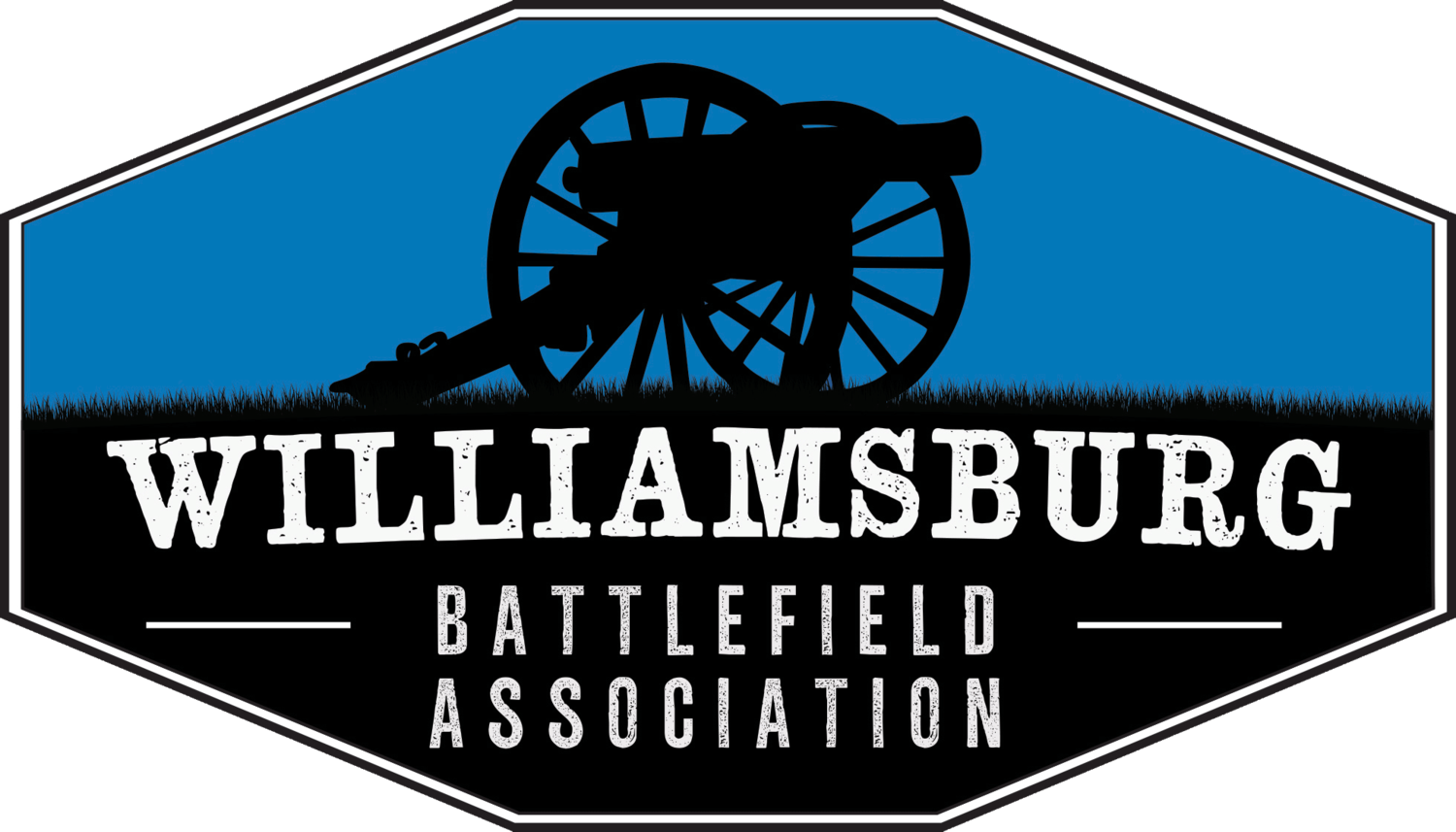In December 2020, the American Battlefield Trust purchased 29 acres of significant Williamsburg battlefield land from the Colonial Williamsburg Foundation. The land is some of the last undeveloped acreage on what was the Confederate right flank/Union left flank during the May 5, 1862 battle. Fighting began here early in the morning and continued throughout the afternoon. Soldiers remembered this area as the “Bloody Ravine” due to a prominent topographical feature and the nature of the fighting that occurred here.
Map Courtesy of the American Battlefield Trust (www.battlefield.org)
location
The Ravine Tract (in yellow above) is located adjacent to modern-day Route 60 about a mile east of the Colonial Historic Area of Williamsburg. The most significant feature of the property’s landscape is a ravine that starts as a small drainage at the intersection of the Yorktown and Hampton Roads (modern Penniman Road and Oak Drive, respectively) to the north and then winds in a westerly and southwesterly direction becoming deeper and wider as it approaches Tutters Neck Pond. The ravine provided a natural barrier upon which the entire right of the Confederate defensive line from Redoubt 1 to Fort Magruder was established. With the exception of a small amount of acreage fronting Route 60, the preserved land is thickly wooded just as it was during the battle.
Historical Significance
During the early morning hours of May 5, Union pickets drove Confederate pickets back to their redoubts, allowing Union scouts to reach as far as the western slopes of the ravine in order to determine the extent of the Confederate defensive works and troop positions. Lt. McAlester, an engineer on Union General Heintzelman’s staff, drew the map below that shows the furthest point he reached during the reconnaissance (point “A”) and the initial lines of battle. For context, the preserved parcel of land is circled in yellow.
Image Courtesy of the Atlas of the Civil War by Stephen G. Hyslop
Later in the morning, Confederate forces counter attacked. General Anderson sent General Wilcox’s brigade out from the defensive line, down into the ravine, and up the wooded eastern slopes to attack a battery that Union General Hooker had set up near the junction of the Yorktown and Hampton Roads. Wilcox’s men drove in Union pickets from General Grover’s “Jersey Blues” brigade. When they reached the main line of the New Jersey brigade, a vicious fight commenced that lasted over an hour and during which neither side gained the upper hand and suffered heavy losses. The nature of this mid-morning fight in the woods under rainy, muddy conditions was illustrated for Harper’s Weekly by correspondent and artist Alfred Waud. In his drawing below can be seen Hooker’s battery in the foreground and the smoke from the ravine fighting to the west circled in yellow.
Waud, Alfred R. "General Hooker's Division Engaging the Enemy at the Battle of Williamsburg." Published in Harper's Weekly May 24, 1862. Library of Congress. www.loc.gov/pictures/item/2004660492/.
Throughout the afternoon, Confederates then fed reinforcements into the attack from the brigades of Generals Hill, Pryor, and Pickett. Like Wilcox’s soldiers, these troops crossed the ravine and woods to attack the Union left flank. Union General Hooker met these forces with regiments thrown piecemeal into the fight as they arrived along the Hampton Road, slowed by the muddy conditions. Included amongst these troops was the famed Excelsior Brigade, consisting of the 70th, 72nd, 73rd, and 74th New York Regiments. What ensued was a chaotic, see-saw affair. By mid-afternoon, the weight of the Confederate numbers pushed the Union left back until it collapsed, and Hooker’s battery was captured ... temporarily. The timely arrival of Union General Kearny’s forces blunted further Confederate success. Fighting ended on this area of the battlefield about 5 PM as the Confederates were forced back to their defenses and to relinquish the hard-won guns.
“It was our honor to ensure that this historic landscape is safeguarded by an organization uniquely situated to interpret it.”
Preservation effort
Zoned for commercial use, the Ravine Tract was valued at just over $2,700,000. The site’s preservation didn’t happen quickly or in a silo. It took time, coordination, and cooperation between many parties. Purchase of this property was made possible through grants from the National Park Service’s American Battlefield Protection Program and the Commonwealth of Virginia and donations from members of the American Battlefield Trust and the public. Forty percent (40%) of donations received came from first-time donors to the Trust. Yes, there is interest in the Civil War history of Williamsburg!
future benefits & plans
The Ravine Tract is now protected by a preservation easement held by Virginia’s Dept. of Historic Resources that will conserve this nearly pristine green space forever. Preservation of the site also expands opportunities to interpret the Battle of Williamsburg, to recognize 7 soldiers who received Medals of Honor for their actions during the fighting, and to reveal how African-Americans on the peninsula and in the immediate vicinity impacted the battle and the war. Development of a Civil War amenity in Williamsburg will additionally broaden the area’s tourism base by attracting that large segment seeking Civil War sites and stories.


